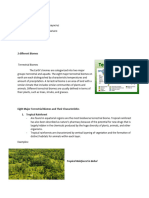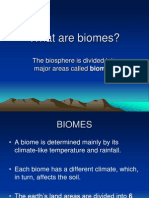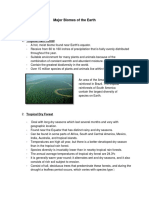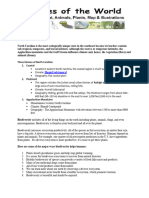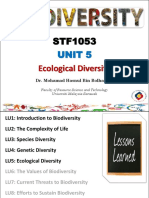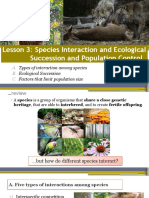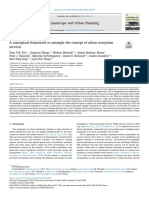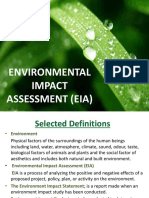0% found this document useful (0 votes)
46 views3 pagesBiomes Module
The document explores Earth's biomes, defining them as large geographic regions with specific climate, soil, flora, and fauna. It outlines major biomes such as tundra, desert, grassland, tropical rainforest, temperate forest, taiga, savanna, and aquatic biomes, emphasizing their ecological importance and the impact of human activities. Understanding and conserving these biomes is crucial for maintaining biodiversity and ecological balance.
Uploaded by
tongquinCopyright
© © All Rights Reserved
We take content rights seriously. If you suspect this is your content, claim it here.
Available Formats
Download as DOCX, PDF, TXT or read online on Scribd
0% found this document useful (0 votes)
46 views3 pagesBiomes Module
The document explores Earth's biomes, defining them as large geographic regions with specific climate, soil, flora, and fauna. It outlines major biomes such as tundra, desert, grassland, tropical rainforest, temperate forest, taiga, savanna, and aquatic biomes, emphasizing their ecological importance and the impact of human activities. Understanding and conserving these biomes is crucial for maintaining biodiversity and ecological balance.
Uploaded by
tongquinCopyright
© © All Rights Reserved
We take content rights seriously. If you suspect this is your content, claim it here.
Available Formats
Download as DOCX, PDF, TXT or read online on Scribd
/ 3











